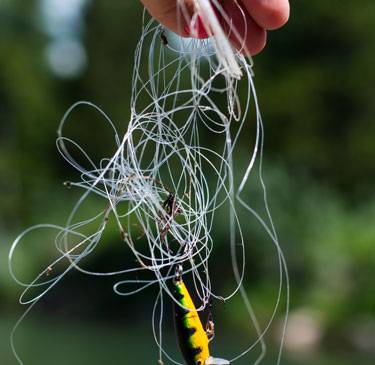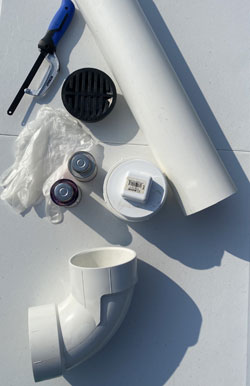NWA Stormwater
Why is it important to recycle fishing line?

Plastic fishing line that ends up in the environment poses a serious threat to wildlife and boat props.
Wildlife can become entangled in the line causing malnutrition, loss of limbs and death. Aquatic trash also reduces the aesthetic and recreational values of creeks, lakes and rivers.
How do I build a fishing line recycling bin?
- Collect supplies:
- 4” diameter-2-foot-long PVC
- 90 degree 4” diameter PVC elbow
- 4” sewer drain cleanout plug (male)
- 4” Charlotte pipe cleanout adapter (female)
- 4” round drainage
- PVC cement
- Super glue
- PVC primer
- Hacksaw
- Assemble the top of the two-foot piece by spreading PVC primer on inside of the elbow
where it connects. Then prime the top of the two-foot piece. Spread PVC glue evenly
over each of the primed areas. Attach the two pieces together.
- Assemble the charlotte’s tube to the two-foot piece on the bottom of the bin. Unscrew
the adapter plug so as not to get glue on the threaded part. Spread PVC primer where
the charlotte’s tube and the two-foot piece connect, followed by PVC glue.
- Prepare the lid for assembly. Using a hacksaw, cut an open rectangle in the center
of the 4” round drainage lid. This will enable fishers to put fishing line in the
bin and prevent litter, as well as wildlife from getting into the bin.
- Attach the lid using superglue. Spread the glue on the inside of the drainage lid, and well as the lip where it connects on the 90-degree elbow. Push lid into the lip to ensure a sturdy connection.
Check out our step-by-step video!